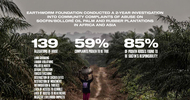Wealth Bulletin | 24 December 2009
You have no cows. You sell both of them and use the proceeds to buy a manure futures contract. This tongue-in-cheek definition of a hedge fund may not be entirely true to life but the idea of managers taking positions in cows and agricultural commodities is real enough and has been doing well.
Agricultural funds made 9.5% last year, according to data provider BarclayHedge, while almost every other investment opportunity lost money.
The funds produced “robust returns” in the first half of last year as grain prices rose and there was talk of food shortages, although many of the funds suffered from the subsequent market turbulence, according to Sol Waksman, BarclayHedge’s founder.
Waksman said a notable trend was greater involvement in physical goods, rather than just trading commodity-based derivatives.
Jonathan Davis, investment director at manager Agrifirma Brazil, invested in farmland. “We believe the long-run return from commodities futures is about zero. In the past 12 months, soybeans doubled in price then halved and commodity prices followed the oil price, which doubled then halved.”
Similarly, monthly falls of 20% among hedge funds investing in shares linked to soft commodities were not unusual, said Jaspal Phull, an analyst at Stenham Advisors. He said there had been “absolute carnage and indiscriminate selling” of some stocks, as the MSCI index of such companies’ shares fell about 45% last year.
Phull said: “The commodity spectrum is definitely one of the most volatile sectors in the market.” To cope with this level of volatility, Stenham seeks managers who have decades of experience in leading physical trading houses such as Cargill and Glencore, ones “who understand the fundamentals of demand and supply”, he said.
One experienced manager is Shonda Warner, born into a US farming family before trading grain at Cargill in the 1980s and then financial instruments at Goldman Sachs. She established a US subsidiary, Chess Ag, to her Chess Capital Partners asset management business in 2007 to buy almost exclusively US farmland, taking cash and crops as rent.
Warner’s decision to buy US land runs against a prominent trend of buying in South America for sugar and grains underpinning bioethanol. Warner said she pays similar prices to those for Brazilian land but prefers the US because of its “lower political risk, crop insurance for farmers and excellent infrastructure”. Labour might cost more, but tractors cost the same worldwide, she said.
Warner said her fund’s hedging and marketing of the physical product could add up to 3% on top of the land’s rental yield of 4% to 5%. She said: “Many people with macro views started agriculture funds and were often quoted in the Wall Street Journal, but perhaps they did not understand how difficult and nuanced the micro machinations of the industry are. Soil, climates and yield can all vary dramatically. On-the-ground knowledge is hugely important.”
Davis said Agrifirma buys Brazilian scrubland, transforming it over two or three years into workable farmland that will benefit from Brazil’s plans to develop its infrastructure. Buying and developing the scrubland, or cerrado, costs about $2,700 (€2,033) per acre, Davis said, but Agrifirma can sell it for about $6,000.
Adam Kibble, division director of the fund management group at bank Macquarie, said: “We are more bullish on agricultural prices than we are on metals and energy prices over the next year or two. “Whatever the financial climate, the population still needs to eat.”











